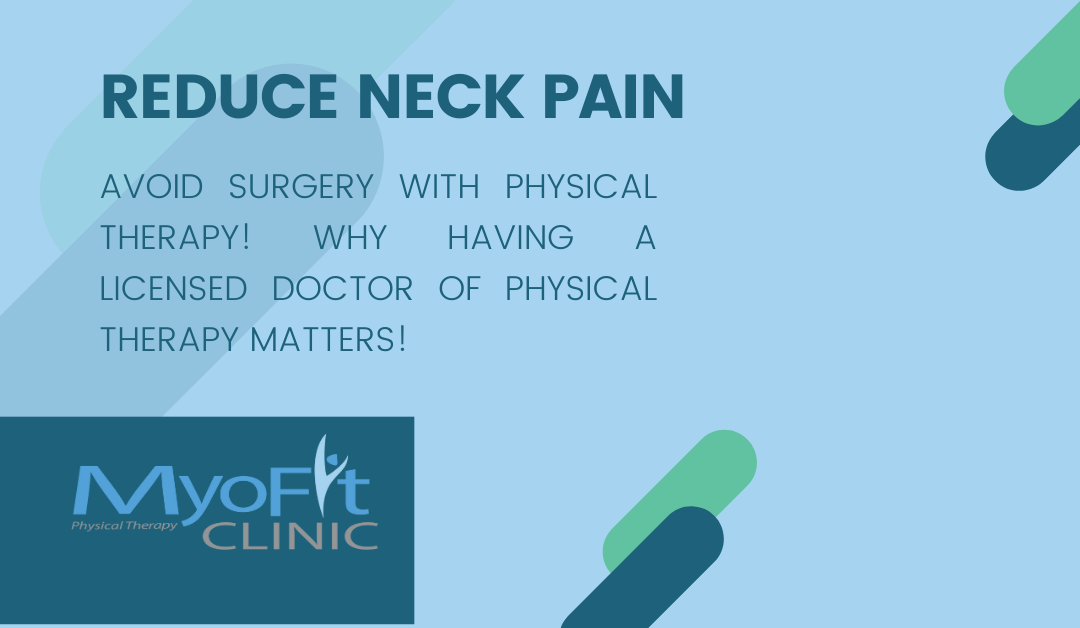Neck pain, whether from a motor vehicle accident, sleeping on it wrong, or from lifting too much weight, sends more than 10 million Americans to physical therapists or other medical professionals each year.
It is important for a licensed doctor of physical therapy to have a chance to assess your range of motion and evaluate how your body is compensating for the neck pain. Once that is done, you will be issued a prescription for therapeutic exercises before making a return visit.
Research demonstrates that movement is the best medicine and strengthening and stretching exercises will benefit you greatly as you struggle to heal from neck pain.
Cause of neck pain not always clear
In one study1 for example, researchers followed 1,334 workers for a period of three years to explore risk factors for neck pain. They found a significant link between the percentage of working time a person spends in a sitting position and neck pain.
These researchers concluded that if you sit at work for more than 95% of your working time, you are more likely to experience neck pain.
Another team2 assessed the link between frequent computer use and neck and shoulder pain. They found that mouse use, in particular, was associated with an increased risk of moderate to severe neck pain.
Poor posture is a major problem for many who develop neck pain. If you lean your head and shoulders forward constantly instead of sitting up straight, sooner or later your neck is going to start paining. When you sit, if your head is slanting far forward of your shoulders, that is an indication you need to adjust your posture.
Another modern cause is the overuse of smartphones that prompt many people to spend hours at a time with their neck and head stretched forward and down to see the device being held in their hand.
Best exercises to use to treat neck pain
Regardless of the cause, what happens when you find yourself experiencing severe neck pain? What kinds of exercises should you engage in to help the healing process and not make things even worse?
A study by L. A. McKinney3 and a group of other researchers zeroed in on the importance of neck mobilization exercises.
Specifically, they determined that best results could be achieved by:
- Chin tucks combined with a deliberate strengthening of the back to ensure good posture
- Trying to touch your shoulder with your ear on each side
- Rotating you heard from side to side
Working to keep neck pain controlled
Like anything else, prevention of neck pain is desired even more than finding ways to treat yourself once it has occurred.
With neck pain, you should use heating pads, warm showers with the cascade of water directed at your neck in order to promote blood flow to loosen up tight muscles and promote healing of damaged structures.
If you need to use your phone for long periods of the day, try to hold it so that your neck is aligned with your shoulders, not learning forward from them. Your neck was not designed to be held in such a position and even if you have been getting away without pain, it will catch up with you.
Whenever you are sitting at your desk for long periods of time, take brief breaks to stretch and strengthen your neck. Do 10 chin tucks, and stretch your head from side to side.
For people who have to spend many hours a day sitting in front of a computer, neck strain is more prevalent if the screen they are looking at is not at the right height.
Sit in front of your computer and close your eyes. Now open them and your eyes should line up directly with the center of your computer screen.
If you or a loved one is suffering from neck pain please consult with a physical therapist immediately to get back on track FAST!
Dr. Adam M. Cramer, PT, DPT, is a licensed Doctor of Physical Therapist, pain specialist, and owner of MyoFit Clinic in Chardon, Ashtabula, & Middlefield, Ohio.
